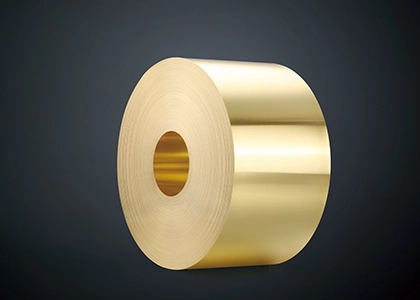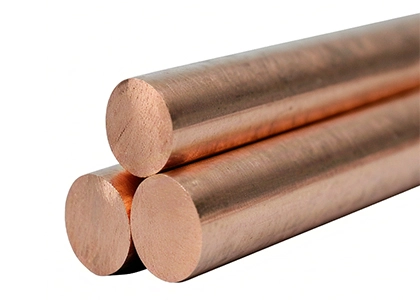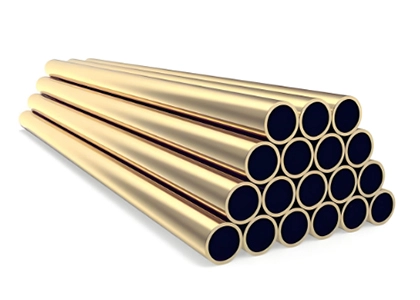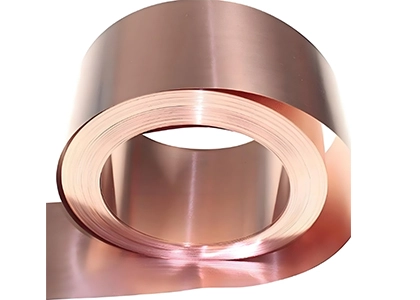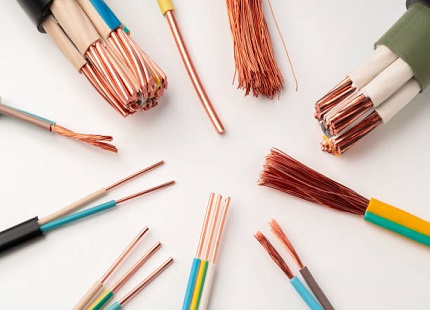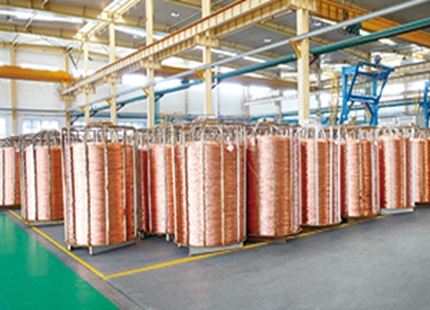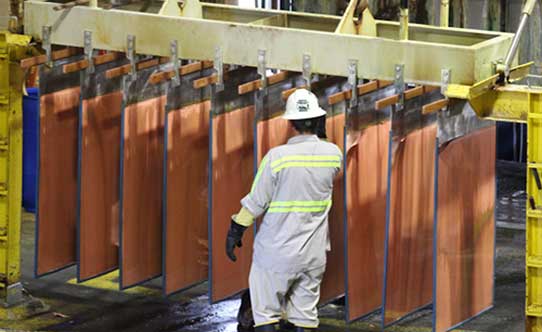Designation and Standards
Standard Designation: H68 (Common Brass)
International/National Standards: GB/T 5231-2012, GB/T 2059-2000 (Strips)
Other Name: Arsenical Brass (H68A with trace arsenic for enhanced corrosion resistance)
Material Category: Copper-Zinc Alloy (Cu-Zn), Copper content 67.0%-70.0%, Zinc as the remainder.
Product Features
Excellent Plasticity: H68 has the best plasticity among commom brass, with outstanding cold and hot working ability, making it suitable for deep drawing, bending, and other complex forming processes.
High Strength and Ductility Balance: Tensile strength ranges widely (M≥290 MPa, up to 660 MPa9(Y)).
Corrosion Resistance: Good resistance to freshwater and atmospheric corrosion. However, it is susceptible to stress corrosion cracking in ammonia and seawater environments (corrosion rate approximately 0.1 mm/a).
Versatile Processability: Supports cold rolling, hot rolling, welding, soldering and brazing, making it ideal for shell casings and precision components.
Common Product Forms and Specifications
Product Form | Specification Range | Typical Applications |
Plate | Thickness 0.2-100mm, Width 305-1000mm | Architectural decoration, instrument housings |
Strip | Thickness 0.01-3.0mm | Electronic components, metal meshes |
Tube | Outer diameter 6-530mm, Wall thickness 0.5-50mm | Condenser tubes, radiators |
Bar | Diameter 4-350mm, Length 2500-6000mm | Mechanical parts, Shell casings |
Wire | Diameter 0.1-12.7mm | Welding wires, Spring components |
Chemical Composition
Element | Cu | Zn | Pb | Fe | Total Impurities | As (H68A) |
Content (%) | 67.0-70.0 | Remainder | ≤0.03 | ≤0.10 | ≤0.3 | Trace Addition |
Physical Properties
Property | Value | Remarks |
Density | 8.5 g/cm³ | Lightweight design advantage |
Thermal Conductivity | 116.7-141.7 W/(m·K) | Close to pure copper, suitable for heat dissipation components |
Melting Point | 966-1001℃ | Alloy melting range |
Coefficient of Thermal Expansion | 19.1×10⁻⁶/℃ (20-300℃) | Good thermal stability |
Electrical Conductivity | ~32% IACS (M) | Lower than pure copper, sufficient for general conductivity needs |
Mechanical Properties
Property | Value | Test Condition |
Tensile Strength (σb) | 370-660 MPa | M≥290 MPa, Y ≥660 MPa |
Elongation (δ10) | ≥15% (Y) | Up to 45% (M) |
Hardness (HV) | 55-190 | Higher hardness (Y) |
Annealing Temperature | 520-650℃ (Conventional Furnace Annealing) | Eliminate cold work hardening |
Low-Temperature Annealing | 260-270℃ | Relieve internal stress |
Core Advantages
Outstanding Comprehensive Performance: Best plasticity among brasses with balanced strength, suitable for deep drawing and bending.
Environmental Corrosion Resistance: Longer service life in freshwater and atmospheric environments compared to common carbon steel.
Versatile Product Forms: Available in plates, tubes, wires, and more to meet industrial customization needs.
Main Application Fields
Military Manufacturing: Shell casings, weapon components (core application).
Electronics and Electricals: Waveguides, heat sink casings, connectors.
Construction and Marine: Condenser tubes, decorative grilles, plumbing fittings (marine protection recommended).
Industrial Equipment: Pump bodies, valves, cold-formed parts, chains.
Processing Considerations
Temperature Control: Hot working temperature should be maintained at 750-830℃ to avoid zinc evaporation and performance degradation.
Annealing Process: Perform low-temperature annealing at 260-270℃ after cold working to mitigate stress corrosion risks.
Welding Requirements: Preferably use argon protected welding to reduce porosity defects.
Frequently Asked Questions
Q: What is the difference between H68 and H68A?
A: H68A contains trace arsenic (As) to significantly enhance corrosion resistance and prevent dezincification, making it suitable for harsher environments.
Q: Is H68 suitable for seawater environments?
A: Direct exposure results in a relatively high corrosion rate (0.1 mm/a). A protective coating or choosing H68A is recommended.
Q: Why is H68 referred to as "Cartridge-Case Brass"?
A: Due to its excellent plasticity and strength, it is widely used for efficiently stamping complex shell casing structures in military applications.
Standard References
Chemical Composition and Processing: GB/T 5231-2012, GB/T 2059-2000.
Mechanical Property Testing: GB/T 228.1 (Metal Tensile Testing).
Note: The above data is compiled from multiple industrial standards and technical documents. Actual performance may vary depending on production processes and testing conditions. Refer to supplier test reports for specific values.

 English
English 한국어
한국어 français
français Deutsch
Deutsch Español
Español italiano
italiano العربية
العربية tiếng việt
tiếng việt Türkçe
Türkçe ไทย
ไทย 中文
中文
